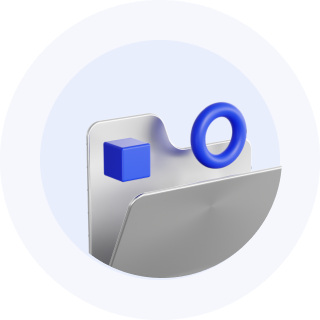
Contact us
Our team would love to hear from you.
EffectiveSoft is one of the leading providers of cloud application development services, delivering innovative and cost-effective solutions to our clients. Our company specializes in building scalable and highly accessible cloud-based applications that can help organizations achieve their business goals.
We offer end-to-end cloud application development services, from ideation to deployment and maintenance, ensuring that our clients receive tailored solutions that meet their specific needs. Our focus on cutting-edge technologies and best practices allows us to deliver custom software solutions that are robust, secure, and reliable, providing our clients with a competitive edge in today’s rapidly changing business environment.

Solutions
These are applications that are hosted and managed by a third-party provider and accessed by users over the internet. EffectiveSoft experts have expertise in deploying on any kind of infrastructure, be it private, public or hybrid cloud.
This is a type of cloud computing in which developers can build and run applications without having to manage infrastructure, such as AWS Lambda, Google Cloud Functions, or Microsoft Azure Functions.
These applications are packaged in containers and can be deployed and run across different cloud environments such as Kubernetes, Docker, or AWS Elastic Container Service (ECS).
Services
We use cloud infrastructure and services, such as storage, computing, and networking, to build and deploy applications that can be accessed over the internet. As a result, our clients get scalable, cost-effective, and highly accessible applications that can meet the needs of their business.
At EffectiveSoft, we know how to move existing applications and workloads from on-premises data centers or other cloud platforms to a cloud environment. This process involves analyzing the application architecture, identifying dependencies, and selecting the appropriate cloud platform and services.
Our considerable experience in cloud app development, allows us to provide guidance and support to organizations that are looking to adopt cloud computing. This includes assessing an organization’s existing infrastructure, recommending a cloud strategy, selecting the appropriate cloud platform, and providing ongoing support and maintenance.
We connect cloud applications and services with other applications and services in an organization’s ecosystem. This can include integrating cloud solutions with on-premises systems, third-party applications, and other cloud services. Cloud application integration enables organizations to improve data visibility and accessibility, streamline business processes, and improve collaboration and communication.
EffectiveSoft DevOps engineers are experts in different clouds, microservices, containers, data storage services, Kubernetes, continuous integration and delivery (CI/CD), infrastructure as code (IAC), helping development and support teams to maintain secure and stable infrastructure.
Our advantages
At EffectiveSoft, we have deep expertise in cloud technologies, development frameworks, and best practices. Our cloud developers are well-versed in a variety of cloud platforms and tools and have experience developing applications that leverage cloud infrastructure and services.
We take security seriously and have experience implementing secure cloud applications. This includes implementing encryption, access controls, threat detection, and mitigation measures to protect cloud applications and sensitive data.
We emphasize collaboration and communication throughout the entire development process. We have a clear and transparent process for communicating with our clients and provide regular progress updates.
Upon request, we provide ongoing support and maintenance for cloud applications, including updates, bug fixes, and security patches.
Benefits
Cloud applications can be easily scaled up or down to meet changing demand, without requiring significant investment in additional hardware or infrastructure.
Cloud-based software can be accessed from anywhere, at any time, using a variety of devices, making it easier for users to work remotely and easily collaborate with others.
With the help of cloud applications businesses save budget by eliminating the need for upfront capital investment in hardware and infrastructure, and by providing more flexible pricing models based on usage.
Cloud solutions are typically hosted on reliable, redundant infrastructure that provides high levels of uptime and availability.
Cloud providers typically invest heavily in security measures to protect their infrastructure and the applications hosted on it, including data encryption, access controls, and threat detection.
Cloud applications can be deployed and updated more quickly than traditional on-premises applications, allowing organizations to respond more rapidly to changing market conditions and customer needs.
Process
Technologies

DevOps plays a crucial role in cloud application development by facilitating collaboration and communication between development and operations teams. By automating the entire software delivery process, DevOps helps to reduce the time it takes to get new features and updates into production. This is especially important in the cloud, where agility and speed are crucial. DevOps also ensures that cloud applications are scalable, reliable, and secure, by integrating testing, monitoring, and continuous improvement into the development process. Finally, DevOps enables organizations to adopt a culture of continuous delivery and improvement, allowing them to quickly respond to changing customer needs and market conditions.
There are several best cloud application development platforms that developers can use to build and deploy applications in the cloud: Amazon Web Services (AWS), Microsoft Azure, Google Cloud Platform (GCP), Oracle Cloud Infrastructure (OCI), IBM Cloud, and Heroku. These platforms offer a variety of tools and services to help developers build, deploy, and manage applications in the cloud.
The cost of cloud application development can vary depending on several factors, including the complexity of the application, the cloud platform being used, and the specific services and features required. For example, some cloud platforms offer free tiers with limited features and usage limits, while others require payment for all services and features. Additionally, the cost of cloud infrastructure and services is based on usage, with some services priced per hour, per GB, or per user. It is important to carefully consider the costs associated with cloud app development, including infrastructure, services, and labor, when planning a project.
Yes, it’s possible to migrate existing applications to the cloud, although the process can be complex and requires careful planning and execution. The best practices to consider when migrating existing applications to the cloud are: assess your application, choose the right cloud platform, plan the migration, test, and monitor and optimize performance. By following these practices, you will ensure a successful migration to the cloud. It is also important to work with an experienced cloud provider or consultant to help guide you through the migration process.
There are two levels of cloud integration that we use: shallow and deep. Shallow cloud integration means moving an on-premises application to the cloud with minimal changes. The core benefit of this approach is that it is fast and inexpensive. However, your solution will not be optimized for the cloud. Using this approach, you miss out on cloud features such as distributed workloads and automatic scalability. Deep cloud integration includes replatforming and re-architecting. Both involve rewriting the application (fully or partially) to make it cloud-optimized. This process is longer and more expensive, but it offers all the benefits and features of cloud migration.
A hybrid cloud environment is a combination of on-premises infrastructure and public and private cloud services. A hybrid cloud allows businesses to take advantage of the security of private clouds while also enjoying the cost-efficiency of public clouds. Using a hybrid cloud solution, we can create a solution tailored to your needs and allow you to store what you need on-premises.
Can’t find the answer you are looking for?
Contact us and we will get in touch with you shortly.
Our team would love to hear from you.
Fill out the form to receive a consultation and explore how we can assist you and your business.
What happens next?